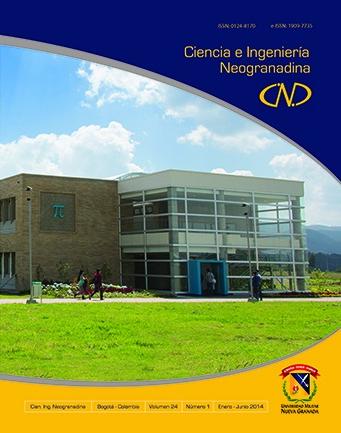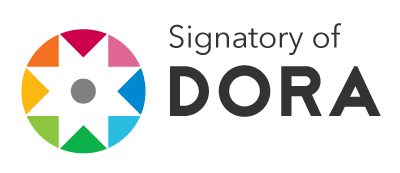Métodos discretos basados en quimiotaxis de bacterias y algoritmos genéticos para solucionar el problema de la distribución de planta en celdas de manufactura.
Resumen
Este trabajo presenta la solución mono-objetivo y multi-objetivo del problema de la distribución de planta en celdas de manufactura a través de dos nuevos algoritmos híbridos discretos basados en quimiotaxis de bacterias y en algoritmos genéticos. Los modelos propuestos resuelven simultáneamente los dos inconvenientes que constituyen el problema de la distribución de planta en celdas de manufactura: la formación de las celdas y la distribución de planta intra e inter celdas, considerando el agrupamiento de las celdas y el costo de transporte y manipulación de materiales. El desempeño de las propuestas se evaluó con problemas de prueba de distribución de planta de celdas de manufactura, agente viajero (TSP) y el caso multi-objetivo del problema de las mochilas. Los resultados mono-objetivo se compararon con AG, BFOA y Bacterial-GA, mientras que los resultados multi-objetivo se compararon con los reconocidos algoritmos NSGA2 y SPEA2 en los que se obtuvo un mejor desempeño en los dos casos.
Descargas
Referencias bibliográficas
Singh, N. (1996). Systems approach to computer - integrated design and manufacturing. Nueva York: John Wiley.
Selim, H. M., Askin, R. G. & Vakharia, A. J. (1998). Cell formation in group technology: review, evaluation and directions for future research. Computers & Industrial Engineering, 34(1), pp 3-20. http://dx.doi.org/10.1016/S0360-8352(97)00147-2
Papaioannou, G. & Wilson, J. M. (2010). The evolution of cell formation problem methodologies based on recent studies (1997-2008): Review and directions for future research. European Journal of Operational Research, 206(39), pp. 509-521. http://dx.doi.org/10.1016/j.ejor.2009.10.020
Yin, Y. & Yasuda, K. (2006). Similarity coefficient methods applied to cell formation problem: a taxonomy and review. International Journal of Production Economics, 101(2), pp. 329-352. http://dx.doi.org/10.1016/j.ijpe.2005.01.014
Hamann, T., & Vernadat, F. (1992). The intra cell layout problem in automated manufacturing system. INRIA-00074957, version 1. N° Research Report -1603 (1992). Recuperado de http://hal.inria.fr/inria-00074957
Elwany, M. H., Khairy, A. B. & Abou-Ali, M. G. (1997). A Combined Multicriteria Approach for Cellular Manufacturing Layout. ClRP Annals – Manufacturing Technology, 46(1), pp. 369 – 371. http://dx.doi.org/10.1016/S0007-8506(07)60845-2
Solimanpur, M., Vrat, P., & Shankar, R. (2004). Ant colony optimization algorithm to the inter-cell layout problem in cellular manufacturing. European Journal of Operational Research. 157(3), pp. 592–606. http://dx.doi.org/10.1016/S0377-2217(03)00248-0
Ming, L.C., & Ponnambalam S.G. (octubre, 2008). A hybrid GA/PSO for the concurrent design of cellular manufacturing system. Systems, Man and Cybernetics, 2008. SMC 2008. IEEE International Conference, pp.1855-1860.
Ariafar, S., Ismail, N., Tang, S.H., Ariffin, M.K.A.M. & Firoozi, Z. (septiembre, 2011). Inter-cell and intra-cell layout design in a cellular manufacturing system. Business, Engineering and Industrial Applications (ISBEIA), 2011 IEEE Symposium, pp.28-33.
Ho, Y. C. & Liao, T.W. (2011). A concurrent solution for intra-cell flow path layouts and I/O point locations of cells in a cellular manufacturing system. Computers & Industrial Engineering, 60(4), pp. 614-634. http://dx.doi.org/10.1016/j.cie.2010.12.019
Wu, X., Chu, C. H., Wang, Y., & Yan, W. (2007). A genetic algorithm for cellular manufacturing design and layout. European Journal of Operational Research, 181(1), pp. 156–167. http://dx.doi.org/10.1016/j.ejor.2006.05.035
Solimanpur, M., Vrat, P., & Shankar, R., (2004b). A multi-objective genetic algorithm approach to the design of cellular manufacturing systems. International Journal of Production Research, 42(7), pp. 1419–1441. http://dx.doi.org/10.1080/00207540310001638073
Kumar, C.S. & Chandrasekharan, M.P. (1990). Grouping efficacy: a quantitative criterion for goodness of block diagonal forms of binary matrices in group technology. International Journal of Production Research, 28(2), pp.233-243. http://dx.doi.org/10.1080/00207549008942706
Chen, T., Tsai, P., Chu, S., & Pan, J. (septiembre, 2007). A novel optimization approach: bacterial-GA foraging. Proceedings of the Second International Conference on Innovative Computing, Information and Control. Washington DC, EE.UU, pp.391-394. http://dx.doi.org/10.1109/icicic.2007.67
Passino, K., (2002). Biomimicry of bacterial foraging for distributed optimization and control. IEEE Control Systems Magazine, 22(3), pp. 52–67. http://dx.doi.org/10.1109/MCS.2002.1004010
Guzmán, M. A., Delgado, A. & Carvalho, J. (2010). A novel multiobjective optimization algorithm based on bacterial chemotaxis. Engineering Applications of Artificial Intelligence, 23(3), pp. 292-301. http://dx.doi.org/10.1016/j.engappai.2009.09.010
Deb, K., Pratap, A., Agarwal, S. & Meyarivan, T. (2002). A fast and elitist multi objective genetic algorithm: NSGA II. IEEE Transactions on Evolutionary Computation, 6(2), pp.182–197. http://dx.doi.org/10.1109/4235.996017
Kumar, P., Bandyopadhyay, S., & Kumar, S. (2007). Multi-objective Particle Swarm Optimization with time variant inertia and acceleration coefficients. Information Sciences, 177(22), pp. 5033–5049. http://dx.doi.org/10.1016/j.ins.2007.06.018
Vitanov, V., Tjahjono, B. & Marghalany, I. (2008). Heuristic rules-based logic cell formation algorithm. International Journal of Production Research, 46(2), pp. 321–344. http://dx.doi.org/10.1080/00207540601138494
Seifoddini, H. & Djassemi, M. (1996). A New Grouping Measure for Evaluation of Machine-Component Matrices. International Journal of Production Research, 34(5), pp. 1179-1193. http://dx.doi.org/10.1080/00207549608904960
King, J.R. (1980). Machine-component group formation in group technology. Omega, 8(2), pp. 193-199. http://dx.doi.org/10.1016/0305-0483(80)90023-7
Burbidge, J. L. (1969). An Introduction of Group Technology. Proceedings of Seminar on Group Technology. Turín, Italia: Birniehill Institute.
Chandrasekharan, K. P. & Rajagopolan, R. (1989). Groupability: an analysis of the properties of binary data for group technology. International Journal of Production Research, 27(6), pp. 1035–1052. http://dx.doi.org/10.1080/00207548908942606
Gen, M., Lin, L. & Zhang, H. (2009). Evolutionary techniques for optimization problems in integrated manufacturing system: State of art survey. Computers & industrial engineering, 56(3), pp. 779-808. http://dx.doi.org/10.1016/j.cie.2008.09.034
The TSPLIB Symmetric Traveling Salesman Problem. (s.f.). Recuperado el 15 de junio de 2012, de http://elib.zib.de/pub/mp-testdata/tsp/tsplib/tsp/index.html
Zitzler, E. & Laumanns, M. (s.f). Test problems and test data for multiobjective optimizers. Recuperado el 21 de junio de 2012, de http://www.tik.ee.ethz.ch/sop/download/supplementary/testProblemSuite/
Zitzler, E., Laumanns, M., & Thiele, L. (mayo, 2001). SPEA2: Improving the strength pareto evolutionary algorithm for multiobjective optimization. Technical report TIK-103, Computer Engineering and Network Laboratory (TIK). Zurich, Suiza.
Deb, K. & Jain, S. (2002). Running performance metrics for evolutionary multi-objective optimization. KanGal Report No. 2002004, Kanpur Genetic Algorithms Laboratory, Indian Institute of Technology. Kanpur, India.











